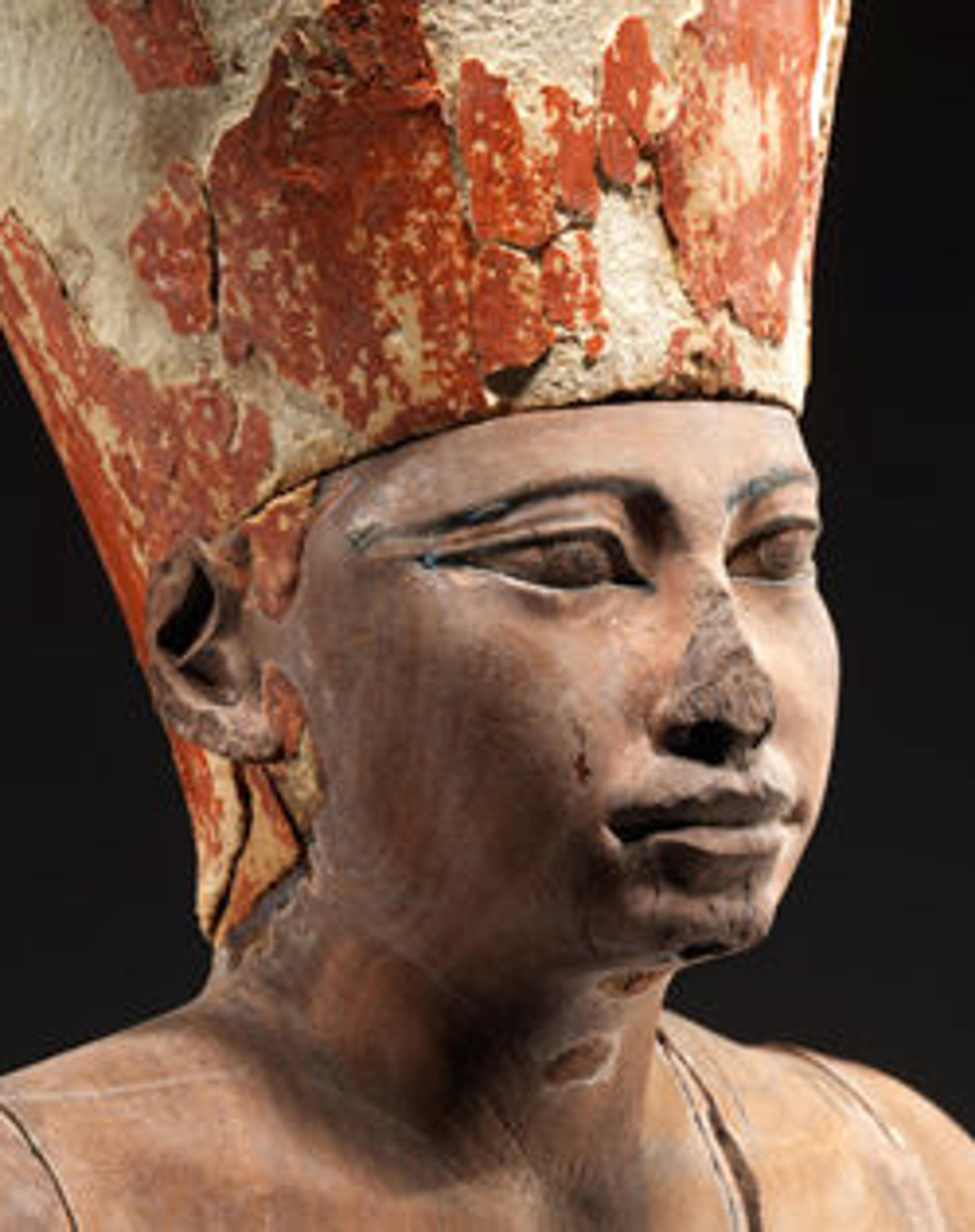Heqanakht Letter I
Heqanakht was a native of Thebes (present day Luxor) during the early twelfth dynasty. As "ka-servant" of a high official he was responsible for the high official's statue cult and the administration of the land and income that had been endowed to maintain this cult. The letters and accounts written by Heqanakht and one or more scribes on sheets of papyrus were discovered by Museum excavator Herbert E. Winlock in the excavation season of 1921-1922 in the tomb of Meseh, who had a side passage and crypt in the tomb complex of the vizier Ipy, one of the rock cut tombs along the cliff overlooking the temples at Deir el-Bahri. The documents - some still folded, tied and sealed, when found - provide unique insights into the domestic and financial affairs of an average middle class family that lived almost four thousand years ago.
This is the front side (recto) of letter I, written, probably by Heqanakht himself, in columns from right to left on a pristine sheet of papyrus in hieratic script with black ink. It is addressed to Heqanakht's family, specifically to a man called Merisu, who was a kind of steward responsible for the functioning of the household and its production. In the letter Heqanakht gives instructions to send two individuals (Nakht, possibly Merisu's deputy, and Sinebniut, a subordinate) to rent land in a place named Perhaa. He makes comments on the rental fee of land previously leased and gives directions about the rations to be provided for the man Nakht on his mission to Perhaa.
Link to a blog about scribes in Ancient Egypt
Showing Signs: Hieroglyphs and Palettes in the Stela of Irtisen
This is the front side (recto) of letter I, written, probably by Heqanakht himself, in columns from right to left on a pristine sheet of papyrus in hieratic script with black ink. It is addressed to Heqanakht's family, specifically to a man called Merisu, who was a kind of steward responsible for the functioning of the household and its production. In the letter Heqanakht gives instructions to send two individuals (Nakht, possibly Merisu's deputy, and Sinebniut, a subordinate) to rent land in a place named Perhaa. He makes comments on the rental fee of land previously leased and gives directions about the rations to be provided for the man Nakht on his mission to Perhaa.
Link to a blog about scribes in Ancient Egypt
Showing Signs: Hieroglyphs and Palettes in the Stela of Irtisen
Artwork Details
- Title: Heqanakht Letter I
- Period: Middle Kingdom
- Dynasty: Dynasty 12
- Reign: reign of Senwosret I
- Date: ca. 1961–1917 B.C.
- Geography: From Egypt, Upper Egypt, Thebes, Deir el-Bahri, Tomb complex of Ipy (TT 315, MMA 516), Tomb of Meseh (MMA 516B), MMA excavations, 1921–22
- Medium: Papyrus, ink
- Dimensions: H. 28.4 cm (11 3/16 in.), W. 27.1 cm (10 11/16 in.)
- Credit Line: Rogers Fund and Edward S. Harkness Gift, 1922
- Object Number: 22.3.516
- Curatorial Department: Egyptian Art
Audio
3310. Heqanakht Papyrus, Part 1
0:00
0:00
We're sorry, the transcript for this audio track is not available at this time. Please email info@metmuseum.org to request a transcript for this track.
Listen to more about this artwork
More Artwork
Research Resources
The Met provides unparalleled resources for research and welcomes an international community of students and scholars. The Met's Open Access API is where creators and researchers can connect to the The Met collection. Open Access data and public domain images are available for unrestricted commercial and noncommercial use without permission or fee.
To request images under copyright and other restrictions, please use this Image Request form.
Feedback
We continue to research and examine historical and cultural context for objects in The Met collection. If you have comments or questions about this object record, please complete and submit this form. The Museum looks forward to receiving your comments.
